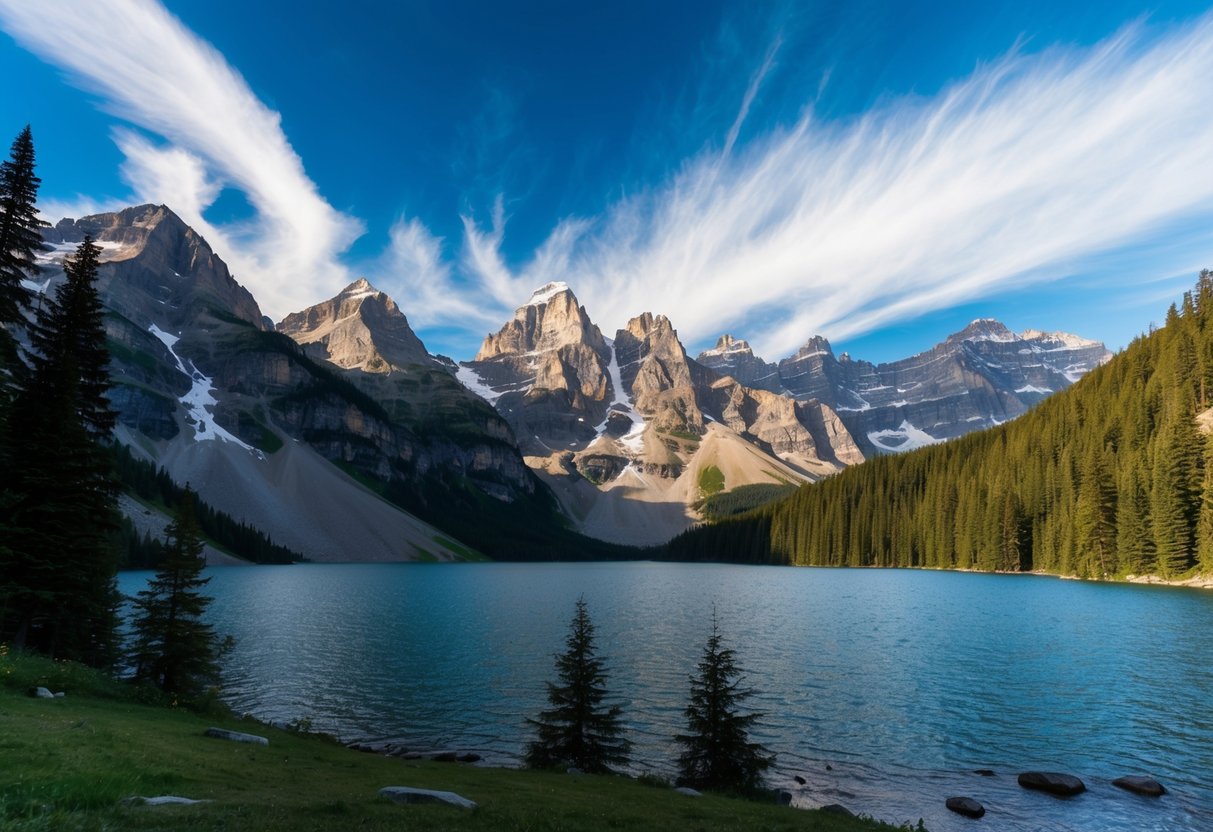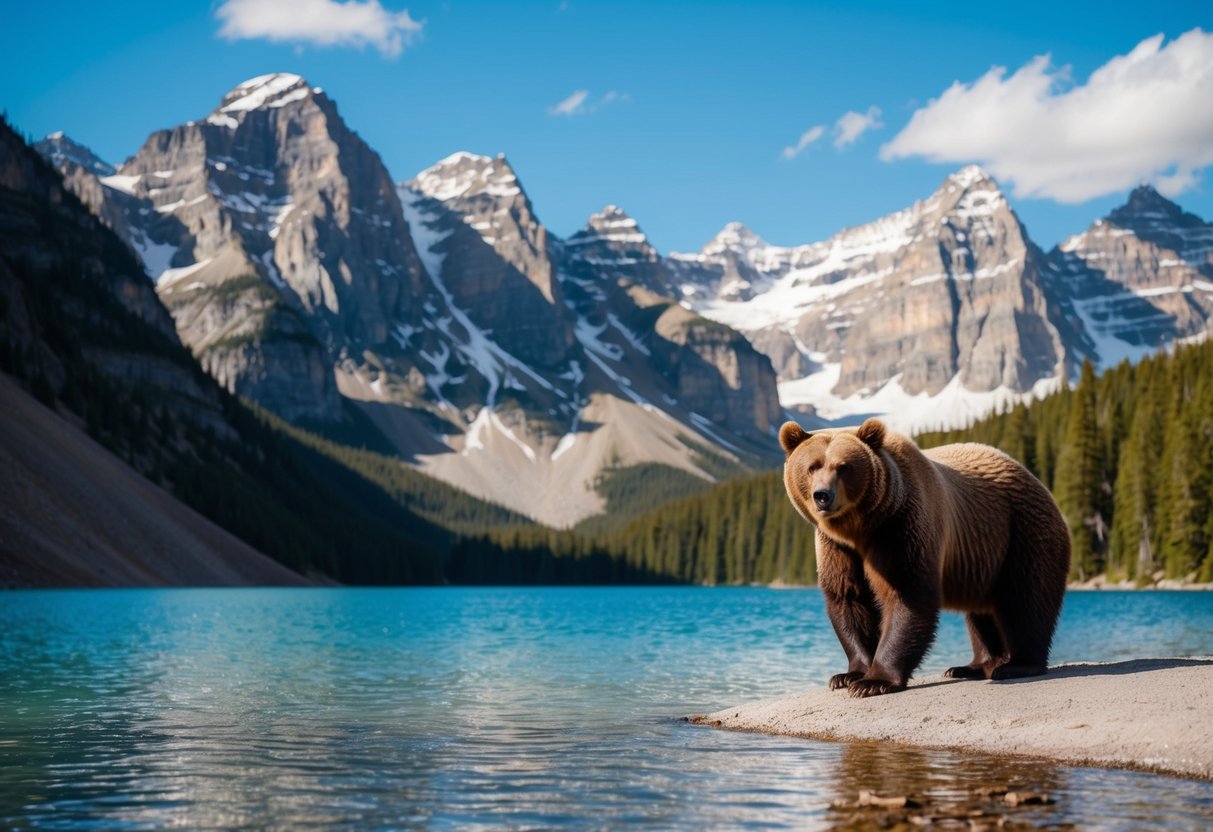
Winter Sports
When winter descends upon the Rockies, the landscape transforms into a wonderland for winter sports. Skiing and snowboarding are popular, with well-known resorts such as Lake Louise and Sunshine Village providing a range of slopes catering to beginners and advanced thrill-seekers. The dry powder snow in this region is a dream for skiing enthusiasts, offering excellent conditions for honing skills.
For those less inclined towards the more extreme sports, cross-country skiing and snowshoeing provide a gentle way to appreciate the tranquil snowy surroundings. The area also hosts specialty tours, such as guided ice walks, allowing participants to safely witness the frozen beauty of the region’s gorges and cascades.
Water Activities
Water enthusiasts will find plenty to explore in the rivers and lakes of the Rockies. Kayaking and canoeing are popular choices in the summer months, with Moraine Lake and Emerald Lake offering serene settings for paddling adventures. The Bow River provides opportunities for more dynamic experiences, like white-water rafting, ideal for thrill-seekers.
Fishing enthusiasts can also indulge in angling at the upper regions of the Athabasca or Kootenay rivers. These waterways are teeming with diverse fish species, presenting ample challenges for both the novice and the experienced. The pristine waters and surrounding landscapes create a breathtaking backdrop for these activities.
Experiencing Wildlife and Flora

The Canadian Rockies are a hub of diverse wildlife, offering nature enthusiasts unique encounters. Elk, with their majestic antlers and distinctive bugle calls, are frequently spotted. They roam freely in the national parks, often near trails and roadways. Observers can witness these creatures in their natural habitat, adding to the allure of wildlife watching activities.
Besides elk, the Rockies are home to numerous other species such as bears, moose, and big horn sheep. Tourists often take part in guided wildlife tours to safely view these creatures. These experiences offer not only the chance to see animals but also to learn about their behaviors and habitats.
The region’s flora is just as captivating. Lush forests of spruce and fir dominate the landscape, varying with altitude and climate. Seasonal wildflowers, like alpine forget-me-nots and glacier lilies, add bursts of color. These plants contribute significantly to the ecosystem by providing food and shelter for wildlife.
Hikers and nature lovers experience this botanical diversity up close along numerous trails. The convergence of such rich flora and fascinating fauna in the Rockies supports an intricate web of life, making it a prime spot for wildlife watching and appreciation.
Historical Sites and Cultural Heritage
Canada’s Rocky Mountains house unique historical and cultural sites that offer a glimpse into the region’s past and artistic endeavors. Visitors can explore museums that highlight the area’s rich history and feats of engineering marvel. These sites serve as a testament to the region’s significance and showcase its diverse cultural fabric.
Banff Park Museum
The Banff Park Museum, established in 1895, stands as Canada’s oldest natural history museum. Located in the heart of Banff National Park, this log building is itself a historic structure. It houses an extensive collection of taxidermied animals, geological specimens, and artifacts that reflect the biological and cultural history of the Canadian Rockies.
Visitors can explore early preservation efforts, embodied in the museum’s exhibits. The museum also emphasizes the work of Norman Bethune Sanson, a naturalist, and curator, whose dedication to the Rockies spanned decades. Providing educational insight, the museum enhances understanding of the region’s ecological and historical significance. The museum’s location at the confluence of the Bow and Spray Rivers further enriches its cultural value.
Spiral Tunnels
The Spiral Tunnels, an impressive engineering achievement, were constructed to address challenges posed by the steep grade of the original railway line in Kicking Horse Pass. Completed in 1909, these tunnels drastically improved the safety and efficiency of train transport across the Rockies. They reduce the original gradient, allowing trains to navigate the intimidating landscape of British Columbia with less risk.
The tunnels are an ingenious solution to the transportation issues of the early 20th century. Visitors can observe the tunnels from designated viewpoints along Highway 1. Interpretive signs provide details about their construction and the impact on the region’s development. The Spiral Tunnels remain a functioning part of the Canadian Pacific Railway, highlighting a significant period in Canadian engineering history.